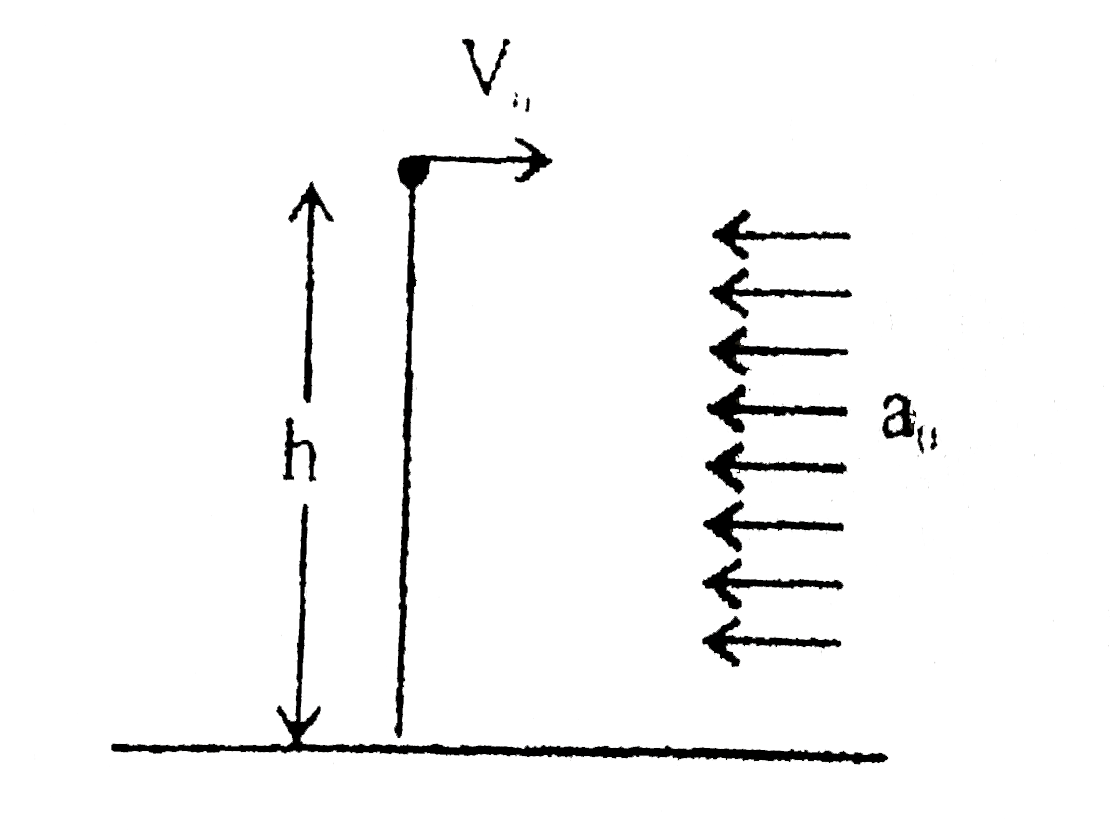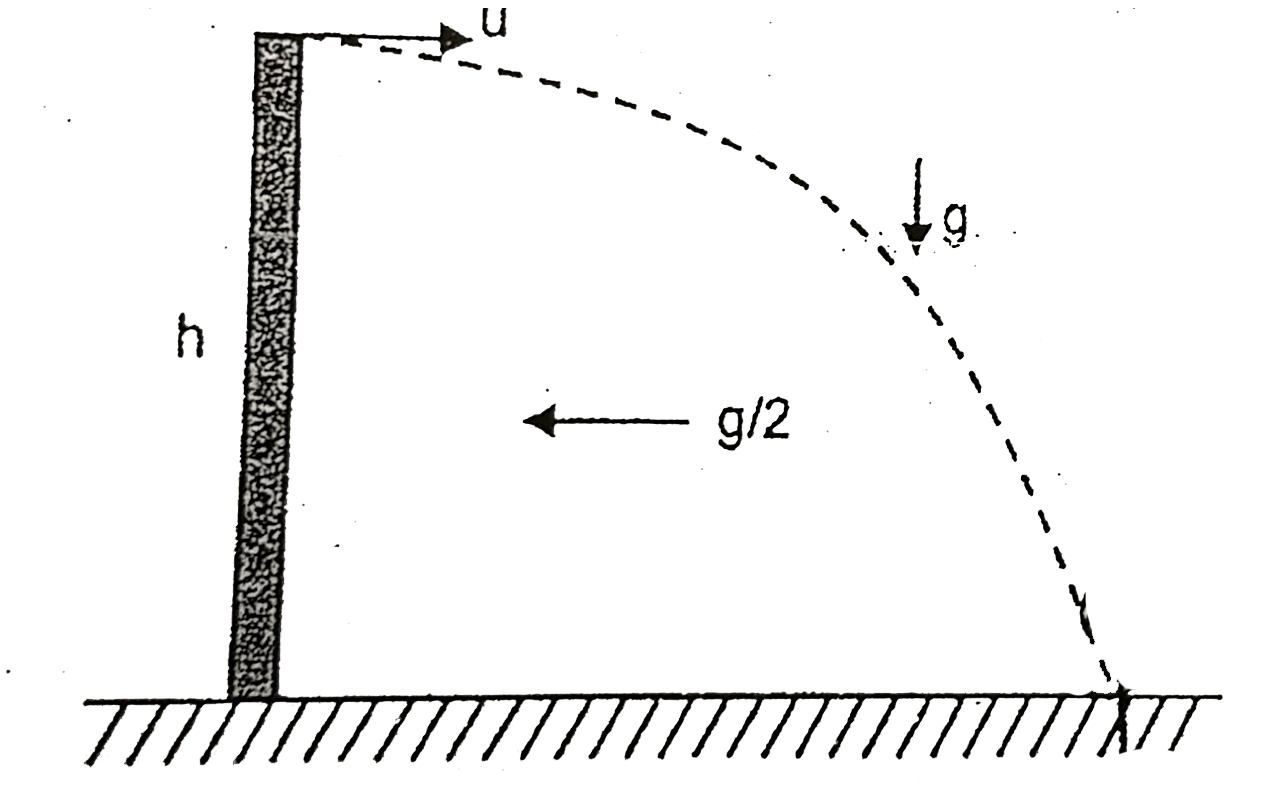A particle is ejected from the tube at A with a velocity V at an angle θ with the verticle y-axis at a height h above the ground as shown. A strong horizontal wind gives the particle a constant horizontal acceleration a in the positive x-direction. If the particle strikes the ground at a point directly under its released position and the downward y-acceleration is taken as g then find h.

h=2V2sinθcosθa
h=2V2sinθcosθg
h=2V2gsinθ[cosθ+agsinθ]
h=2V2asinθ[cosθ+gasinθ]
The correct Answer is:D
A particle is …………
Since x - displecement is zero
0=Vsinθt−12at2
t=2Vsinθa
h=Vcosθt+12gt2
h=2V2asinθ[cosθ+gasinθ]
Similar Questions
A particle Is projected at point 'A' with initial velocity 5m/s at an angle θ=37∘ with the vertical y axis. A strong horizontal wind gives the particle a constant horizontal acceleration 6m/s2 in the x direction. If the particle strikes the ground at a point directly under its released position, determine the height 'h' of point A. The downward acceleration is taken as the constant
g=10m/s2(take sin37∘=35,cos37∘=45)
 View Solution
View SolutionVelocity of a particle is in negative direction with constant acceleration in positive direction. Then match the following:
 View Solution
View Solution
Knowledge Check
- Question 1 - Select One
A particle is projected from a point P with a velocity v at an angle θ with horizontal. At a certain point Q it moves at right angles to its initial direction. Then
AVelocity of particle at Q is vsinθBVelocity of particle at Q is vcotθCTime of flight from P to Q is (v/g)cosecθDTime of flight from P to Q is (v/g)secθ - Question 2 - Select One or More
A particle is fired from a point on the ground with speed u making an angle θ with the horizontal.Then
Athe radius of curvature of the projectile at the highest point is u2cos2θgBthe radius of curvature of the projectile at the highest point is u2sin2θgCat the point of projection magnitude of tangential acceleration is gsinθDat the point of projection magnitude of tangential acceleration is gcosθ - Question 3 - Select One or More
A particle is moving horizontally with constant acceleration.
AThe sum of the horizontal components of the forces acting on the particle is not zero.BThe sum of the vertical component of the forces acting on the particle is not zero.CThe forces acting on the particle are not in equilibrium.DAll of the above.
A particle is projected form ground with velocity u ar angle θ from horizontal. Match the following two columns.
 View Solution
View SolutionA particle is projected horizontally from a tower with velocity V0. Wind is blowing in opposite direction and is providing a constant horizontal acceleration a0. If particle strikes the ground vertically then height of building is
 View Solution
View SolutionA particle is projected horizontally from a tower with velocity u towards east. Wind provides constant horizontal acceleration g2 towards west. If particle strikes the ground vertically the then :
 View Solution
View SolutionA particle is projected with velocity v at an angle of θ with horizontal. The average angular velocity of the particle from the point of projection to impact equals:
View SolutionA particle is projected from the ground with an initial speed of v at an angle θ with horizontal. The average velocity of the particle between its point of projection and highest point of trajectroy is :
View Solution
